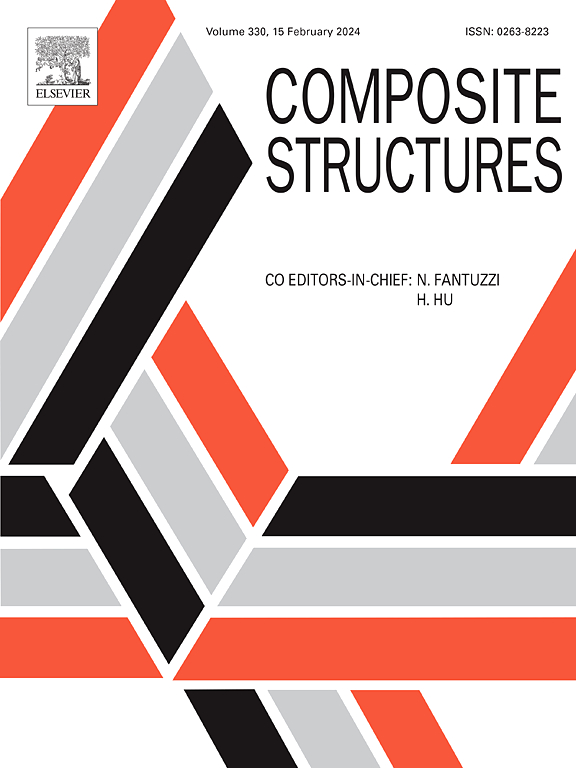A novel composite of Closed-Cell aluminum foam and Phase-Change material for enhanced mechanical safety in EV battery systems
IF 7.1
2区 材料科学
Q1 MATERIALS SCIENCE, COMPOSITES
引用次数: 0
Abstract
This study proposes an innovative physical modification-infusion strategy to uniformly infuse phase change material (PCM) into the physically modified closed-cell aluminum foam (PMAF) via vacuum-assisted infusion technology. The resulting aluminum-foam-based phase-change composite material (AFPCM) combines the high energy absorption characteristics of aluminum foam with the thermal energy storage capacity of PCM, forming a three-dimensional interconnected composite structure that enables both mechanical performance enhancement and efficient thermal energy storage. Experimental results showed that, compared with untreated closed-cell aluminum foam (CCAF), the compressive strength of AFPCM increased by 45.2 %, the elastic modulus increased by 14.4 %, and the energy absorption increased by 55.7 %, based on a matrix density of 0.4 g/cm3. CT scans further confirmed the uniform distribution of PCM within the PMAF, ensuring the stability of material properties. In addition, battery system simulations showed that AFPCM exhibits excellent mechanical safety, providing a scalable and structurally integrated solution for the next generation of electric vehicle battery systems. Future research will further explore the dynamic response under impact load, thermal properties of AFPCM, and investigate the structural design and thermal management simulation of battery integration in depth.
一种新型闭孔泡沫铝和相变材料复合材料,用于提高电动汽车电池系统的机械安全性
本研究提出了一种创新的物理改性注射策略,通过真空辅助注射技术将相变材料(PCM)均匀注入物理改性的闭孔泡沫铝(PMAF)中。由此产生的泡沫铝基相变复合材料(AFPCM)结合了泡沫铝的高能量吸收特性和PCM的储热能力,形成了三维互联的复合材料结构,既能提高机械性能,又能高效储热。实验结果表明,在基质密度为0.4 g/cm3的情况下,与未经处理的闭孔泡沫铝(CCAF)相比,AFPCM的抗压强度提高45.2%,弹性模量提高14.4%,吸能提高55.7%。CT扫描进一步证实了PCM在PMAF内的均匀分布,保证了材料性能的稳定性。此外,电池系统模拟表明,AFPCM具有出色的机械安全性,为下一代电动汽车电池系统提供了可扩展和结构集成的解决方案。未来的研究将进一步探索AFPCM在冲击载荷下的动态响应、热性能,并对电池集成的结构设计和热管理仿真进行深入研究。
本文章由计算机程序翻译,如有差异,请以英文原文为准。
求助全文
约1分钟内获得全文
求助全文
来源期刊

Composite Structures
工程技术-材料科学:复合
CiteScore
12.00
自引率
12.70%
发文量
1246
审稿时长
78 days
期刊介绍:
The past few decades have seen outstanding advances in the use of composite materials in structural applications. There can be little doubt that, within engineering circles, composites have revolutionised traditional design concepts and made possible an unparalleled range of new and exciting possibilities as viable materials for construction. Composite Structures, an International Journal, disseminates knowledge between users, manufacturers, designers and researchers involved in structures or structural components manufactured using composite materials.
The journal publishes papers which contribute to knowledge in the use of composite materials in engineering structures. Papers deal with design, research and development studies, experimental investigations, theoretical analysis and fabrication techniques relevant to the application of composites in load-bearing components for assemblies, ranging from individual components such as plates and shells to complete composite structures.
 求助内容:
求助内容: 应助结果提醒方式:
应助结果提醒方式:


